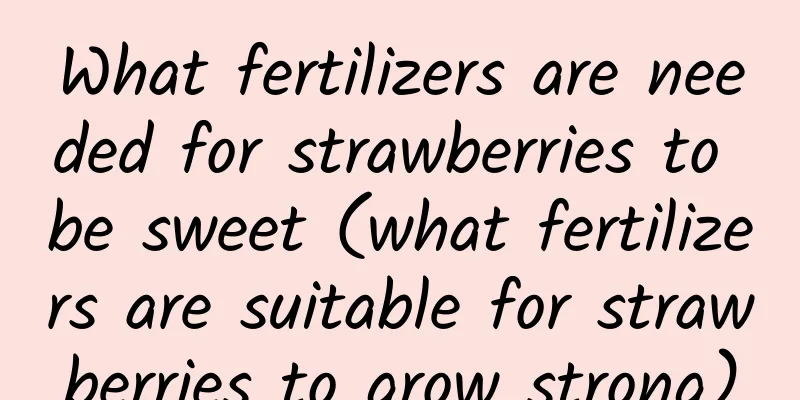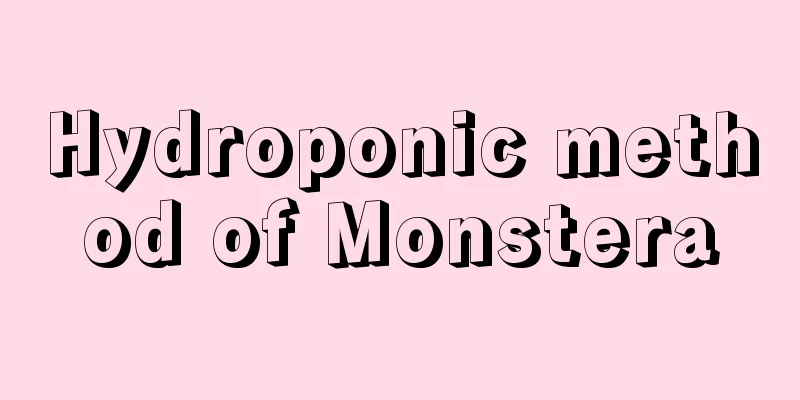What fertilizers are needed for strawberries to be sweet (what fertilizers are suitable for strawberries to grow strong)

|
Strawberry is one of the popular fruits that is deeply loved by consumers. It has a sweet taste and delicious flavor. In my country, it not only has a large commercial cultivation area, but also has a large commercial cultivation area. In the commercial production of strawberries, larger and sweeter strawberries are more popular and have higher cultivation benefits. The size and sweetness of strawberries are directly related to the type of fertilizer used. In fact, the fertilizers used for strawberries at different growth stages are also different. Basal fertilizers need to be applied before strawberries are planted, usually farmyard manure, potassium sulfate, urea, etc. What fertilizer should be used for strawberries to grow big and sweet?Top dressing is required from the beginning of growth to before flowering, and urea and potassium sulfate are usually used for top dressing. After flowering, foliar fertilizer needs to be sprayed to increase the fruit setting rate, and potassium dihydrogen sulfate and urea are commonly used. The amount used in different stages is also different. Next, let's learn more about base fertilizer, topdressing, and foliar fertilizer. 1. Base fertilizerBase fertilizer is the basis for the healthy growth of strawberries and the formation of yield and quality, and its role cannot be replaced by later topdressing. The base fertilizer for strawberries should be mainly organic fertilizer, which can provide 16 essential nutrients for the strawberries to successfully complete their growth cycle. The comprehensiveness of its nutrient provision is difficult to achieve through top dressing. At the same time, chemical fertilizers should be added to the base fertilizer to meet the absorption and supply of elements that are in high demand for strawberry growth. The organic fertilizer used as base fertilizer should be fully decomposed farmyard manure or cake fertilizer. The amount of farmyard manure should not be less than 5000kg per mu of land, and the amount of cake fertilizer should be 200-300kg. However, the salt content, antibiotic content, and heavy metal content of commercial chicken manure and pig manure generally exceed the standard, and it is not recommended to use them in the production of high-quality strawberries. The dosage of base fertilizer is 30-40kg of chemical fertilizer in a 1:1:1 ratio. Strawberry is a calcium-loving crop, so base fertilizer should be mixed with organic fertilizer per acre, and the dosage is 25-30kg per acre. 2. TopdressingRoot topdressing is an important means to meet the nutrient preferences of strawberries at various growth stages. Before strawberries bloom and bear fruit, the main growth is vegetative growth, and the nutrient demand at this time is mainly nitrogen fertilizer. At this time, we need to pay attention to the balanced supply of the three elements of nitrogen, phosphorus and potassium. After entering the flowering and fruiting period, the physiological activities of strawberries change to parallel vegetative growth and reproductive growth. However, for commercial production, this stage requires promoting the organic matter produced by photosynthesis to be transported to the fruit as much as possible, thereby accumulating yield and quality, rather than using synthesized organic matter to grow leaves. Phosphorus and potassium fertilizers are beneficial to the transportation and accumulation of nutrients to the fruit organs. If nitrogen fertilizers are still applied predominantly during this stage, it will inhibit the expansion of the fruit and the formation of flavor, and reduce the weight and sweetness of single fruits. Specifically, before flowering and fruiting, 9-10kg of urea and 4-6kg of potassium sulfate can be applied with water per acre of land. Note that the application time of urea and potassium sulfate should be staggered by more than one week . Because nitrogen fertilizer and potassium fertilizer will compete (ion antagonism) during the absorption process of the root system, excessive nitrogen fertilizer will reduce the absorption and utilization efficiency of potassium fertilizer. During the strawberry fruit expansion period, 7-8 kg of urea and 10 kg of potassium sulfate are generally applied per mu. The frequency of topdressing is about once every 3 weeks. The specific amount and frequency may fluctuate according to the growth status of the strawberry and the soil fertility . 3. Foliar fertilizerFoliar topdressing is an important means to supplement the nutrients necessary for strawberry growth, especially after the strawberry enters the flowering and fruiting period, the demand for fertilizers such as potassium fertilizer and calcium fertilizer increases significantly. At this time, the production and quality of strawberries are often affected because these nutrients with relatively high demand cannot be supplied in time. At this time, external fertilization can play a good emergency role. The commonly used method for topdressing strawberry leaves is to spray 0.3% potassium dihydrogen phosphate and 0.3% borax per acre of strawberries before entering the flowering and fruiting period. Potassium dihydrogen phosphate can promote the accumulation of organic nutrients produced by the leaves to the flower buds. Fertilizing in this way can ensure that the differentiated flower buds are plump and strong, while boron fertilizer can promote the quantity and quality of flower bud differentiation, thereby improving the fruit setting rate and increasing the weight of single fruit. After the strawberries enter the fruiting period, they should be sprayed with 0.3% potassium dihydrogen phosphate and 0.2% calcium sulfate, about once every 10 days. The purpose of spraying potassium sulfate foliar fertilizer is to promote fruit enlargement and quality formation. The calcium fertilizer provided by calcium sulfate can increase the weight of single fruit and the storage performance of fruit. The time for spraying foliar fertilizer is selected in the evening of cloudy, overcast or sunny days to improve the absorption and utilization rate of foliar fertilizer. Matters Needing Attention in Fertilization During Strawberry Planting1. The root system of strawberries is not well developed in the early stage of growth, so it is recommended to apply a small amount of fertilizer in the early stage. After flowering, the demand is greater, and the dosage should be increased according to the plant's demand for each element. 2. Note that the amount of fertilizer needs to be reasonably controlled. Too much fertilizer can easily cause yellowing of leaves and soil salinization; too little fertilizer will result in insufficient nutrition and affect plant growth. 3. The best time to apply fertilizer is around 10 am. Note that it is not suitable to apply fertilizer after 2 pm, otherwise it is easy to accumulate fertilizer and burn the roots, affecting growth. |
Recommend
How to grow Buddha's palm
Summer and winter maintenance Because it is also ...
Is the pomegranate tree easy to grow? How to grow potted pomegranates
Is it easy to grow a pomegranate tree? The pomegr...
How to grow the succulent plant Star Prince
1. Breeding environment Water: Do not water the S...
How to grow pomegranate seeds in a small pot
1. Soak the seeds Wash off the transparent membra...
When is the best season to plant ginseng?
Ginseng is a common and precious medicinal materi...
Potato planting time and method planting method steps
Potato planting time The planting time for potato...
Dragon fruit cutting time and method
Dragon fruit cutting time Dragon fruit can be pro...
How to grow indoor peace trees and precautions
Growth habits of peace lily The peace lily likes ...
Appreciation of hydroponic cultivation of Echeveria luxuriata
Water culture and maintenance of Echeveria luxuri...
Daniel's breeding methods and precautions
1. Maintenance methods 1. Potting soil: Daniel li...
Still spending money on flowers, others don't need to spend a penny to get more pots
Azalea 1. Select the semi-lignified top branches,...
How to propagate white chrysanthemum
Cutting propagation of white chrysanthemum The su...
How to grow a lucky tree
1. Breeding environment 1. Soil: Choose loose, fe...
Lithops Varieties
1. How many varieties are there? Lithops is a com...
Do lemon trees like water or drought?
Do lemon trees prefer moisture or drought? Lemon ...









